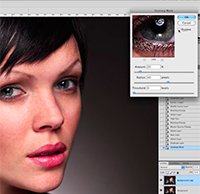Achieve sharper and more impactful prints with these tips
posted Wednesday, December 30, 2015 at 5:37 PM EST

Professional photographer and teacher Karl Taylor has published a video tutorial for preparing images for exhibition-quality printing. The video tutorial is aimed at photographer's sending their image files to a lab for printing, but these tips can also work for photographers who print their own images at home.
The first thing that Taylor says that you need to make high-quality prints is a calibrated display. By calibrating your display, you will have a more accurate view of an image's colors and tones, and prints will therefore be more likely to match the image seen on your display.
Your images may look great on your display, with vibrant colors, bright tones, and lots of detail. However, a print is an entirely different type of media made up of different materials, so there are steps you can take to make your print look more like the image you see on your display. By adjusting contrast and sharpening, we can enhance images for printing. In addition, we need to ensure that we have our files properly sized with the right resolution (this depends on your printer).
When you have a properly-sized image, Taylor's next step is to sharpen the image file. He recommends using Photoshop's Unsharp Mask filter. The effect of this filter can be subtle, but sometimes that is all that is needed. He also utilizes the Unsharp Mask to boost an image's contrast when preparing the file for printing. With his high resolution image file, setting 'Amount' to 20% and 'Radius' to 40 pixels adds just a little bit of contrast and enhances the final print. Another method for increasing contrast is using a Curves adjustment layer and increasing the image's highlights. If you don't desire the slight saturation increase that this curves adjustment can introduce, change the layer blend mode to 'Luminosity.'
To see Taylor utilize a 'High Pass' filter to increase the sharpness of an image for printing and to see more information about his other techniques for preparing images for print, make sure to watch the full video above.
For more information about Karl Taylor's photography tutorials and his work, visit his website.
(Seen via ISO 1200)